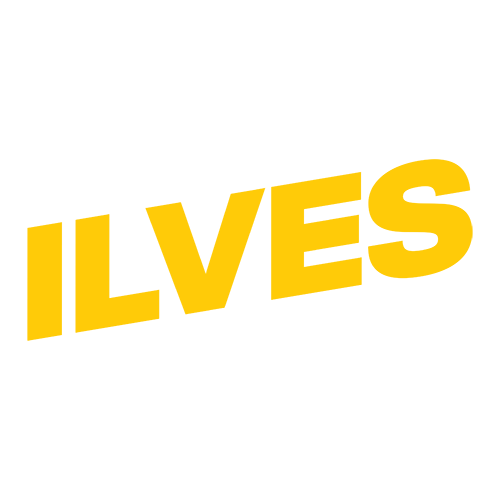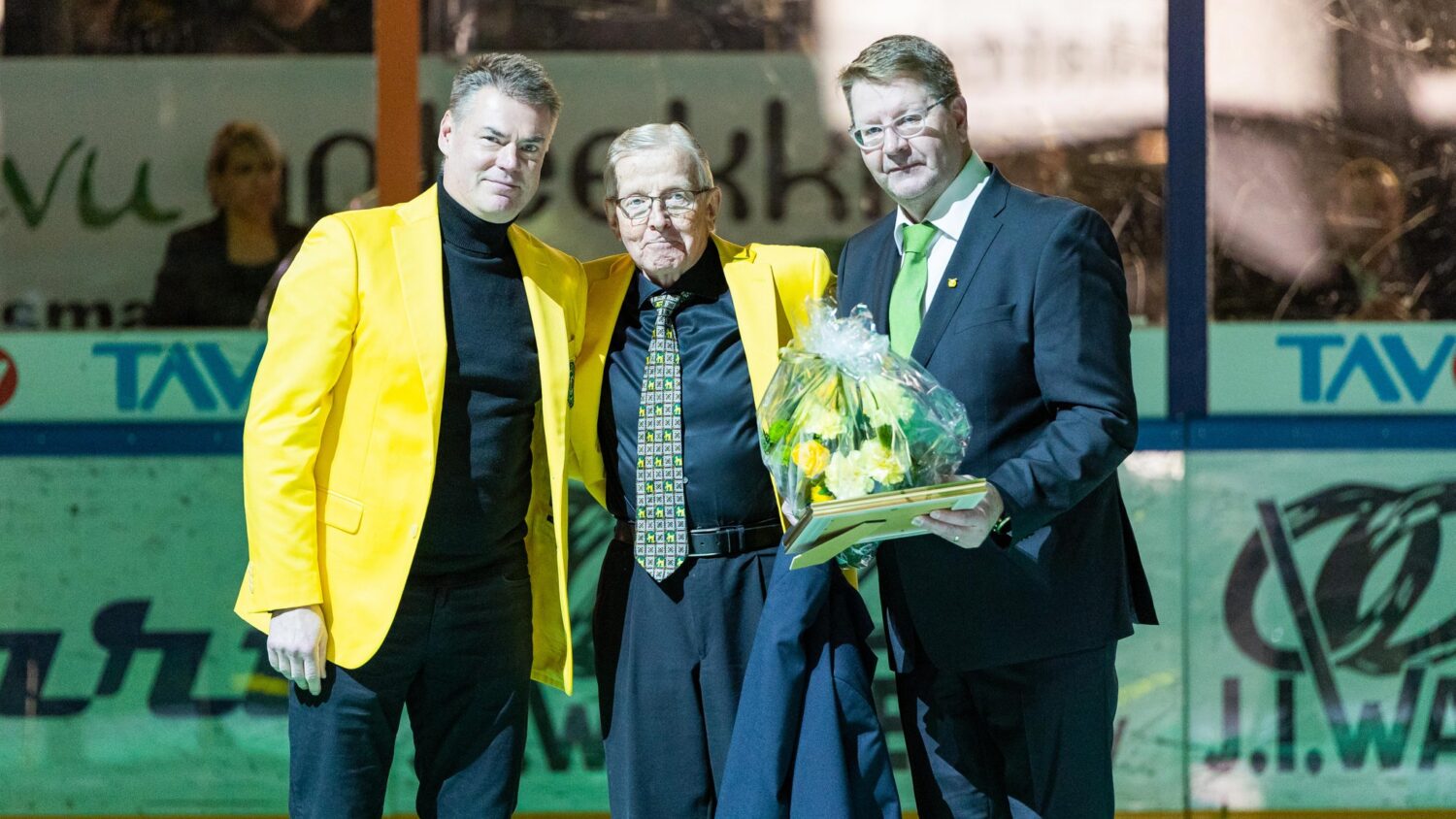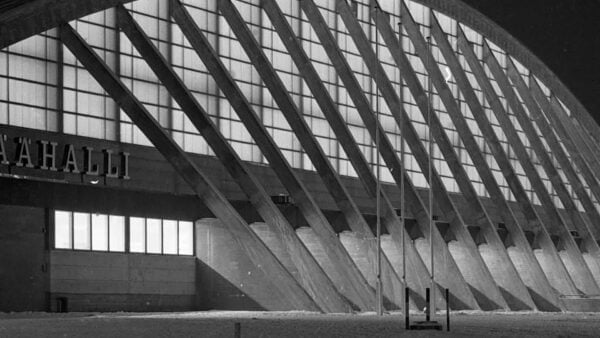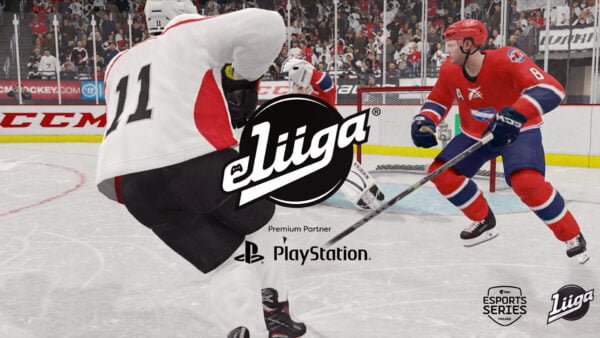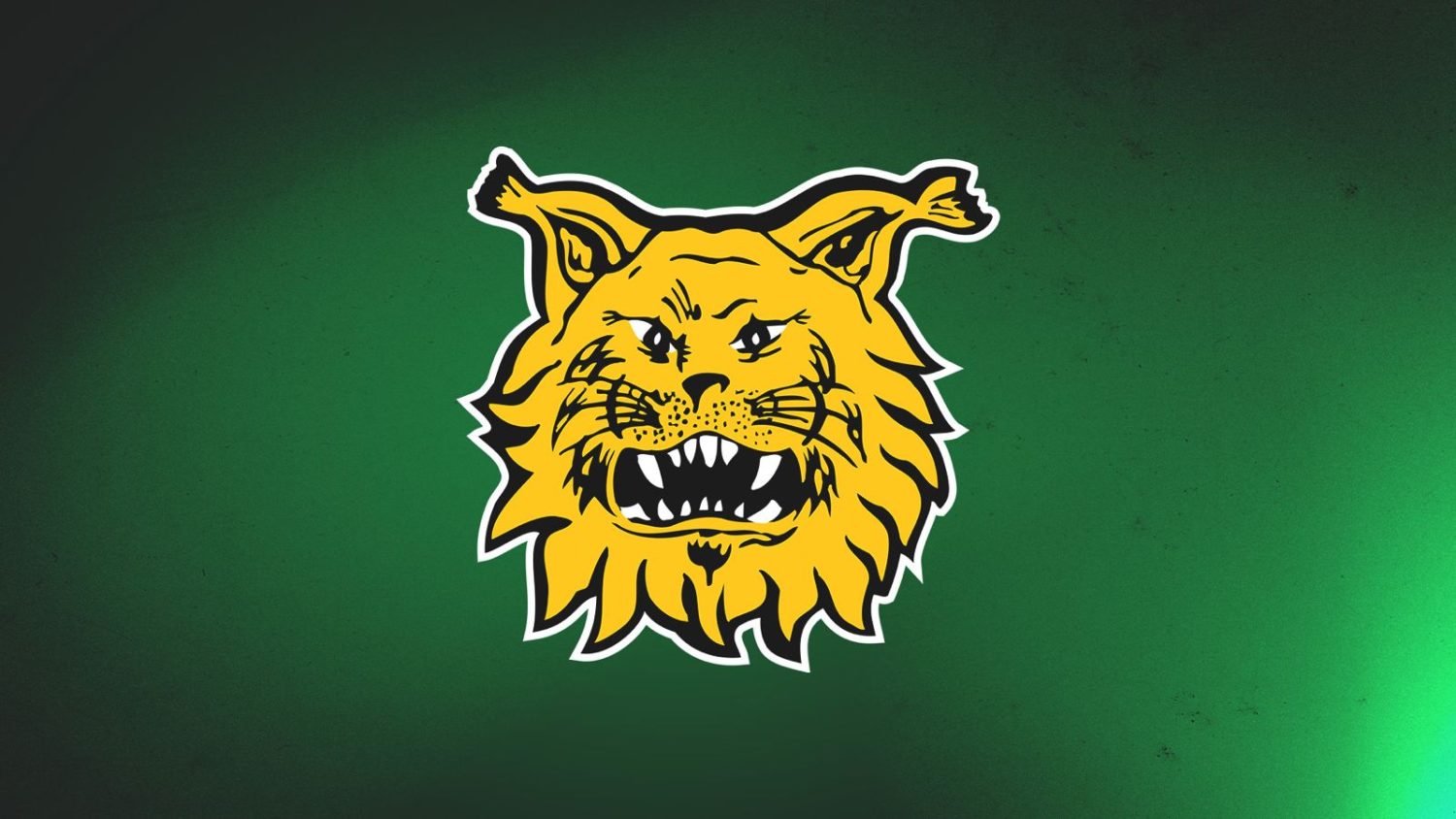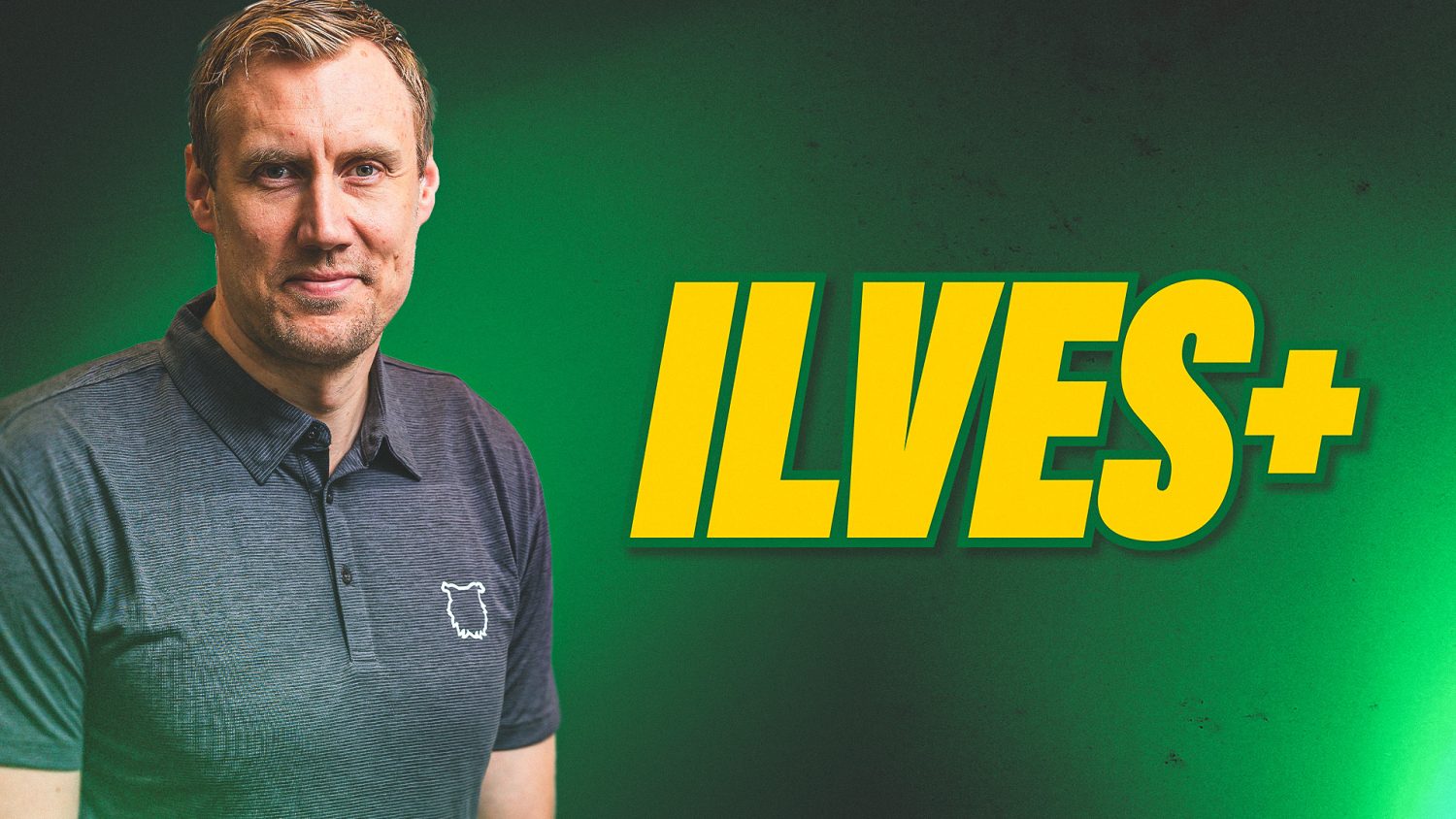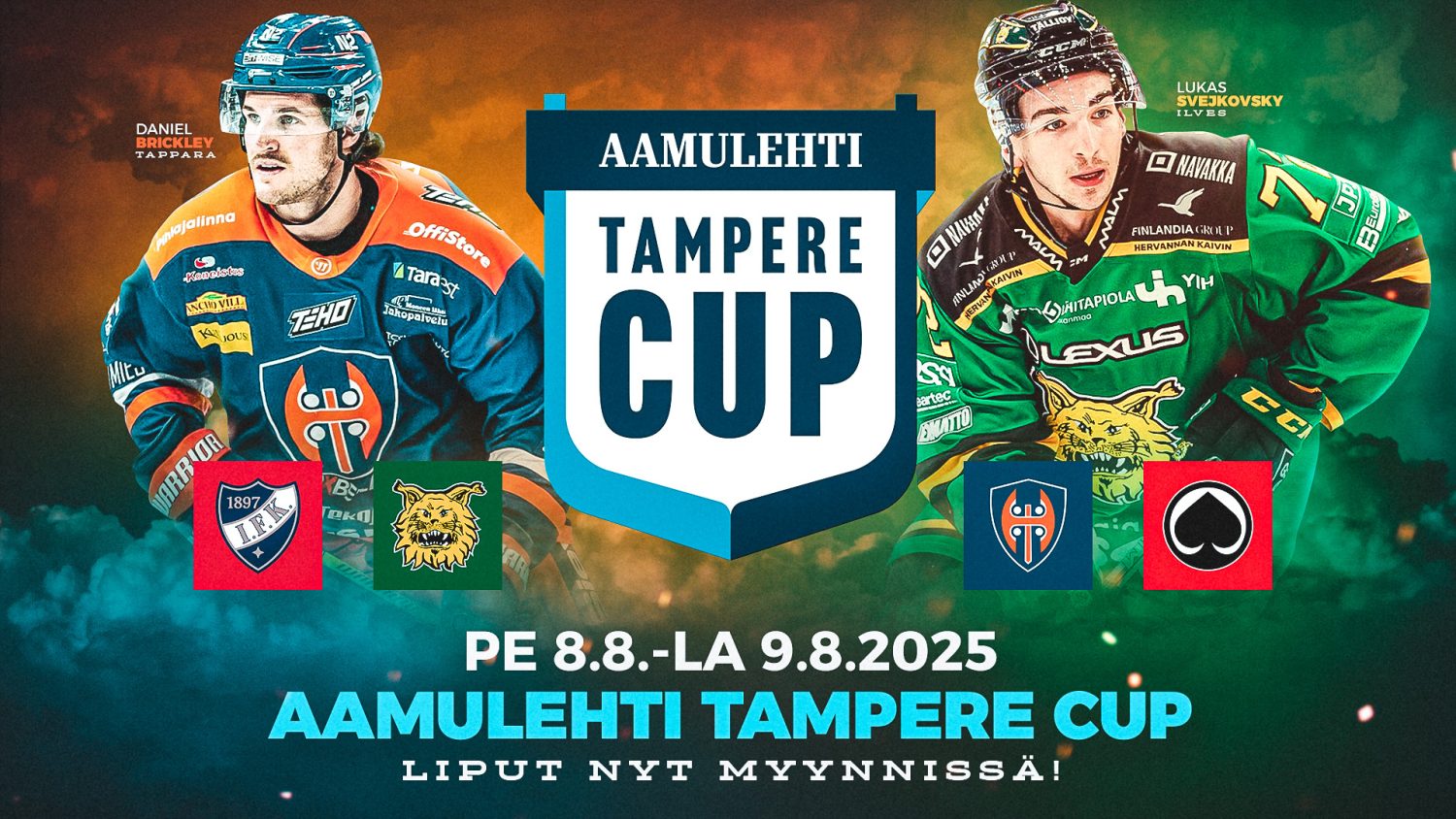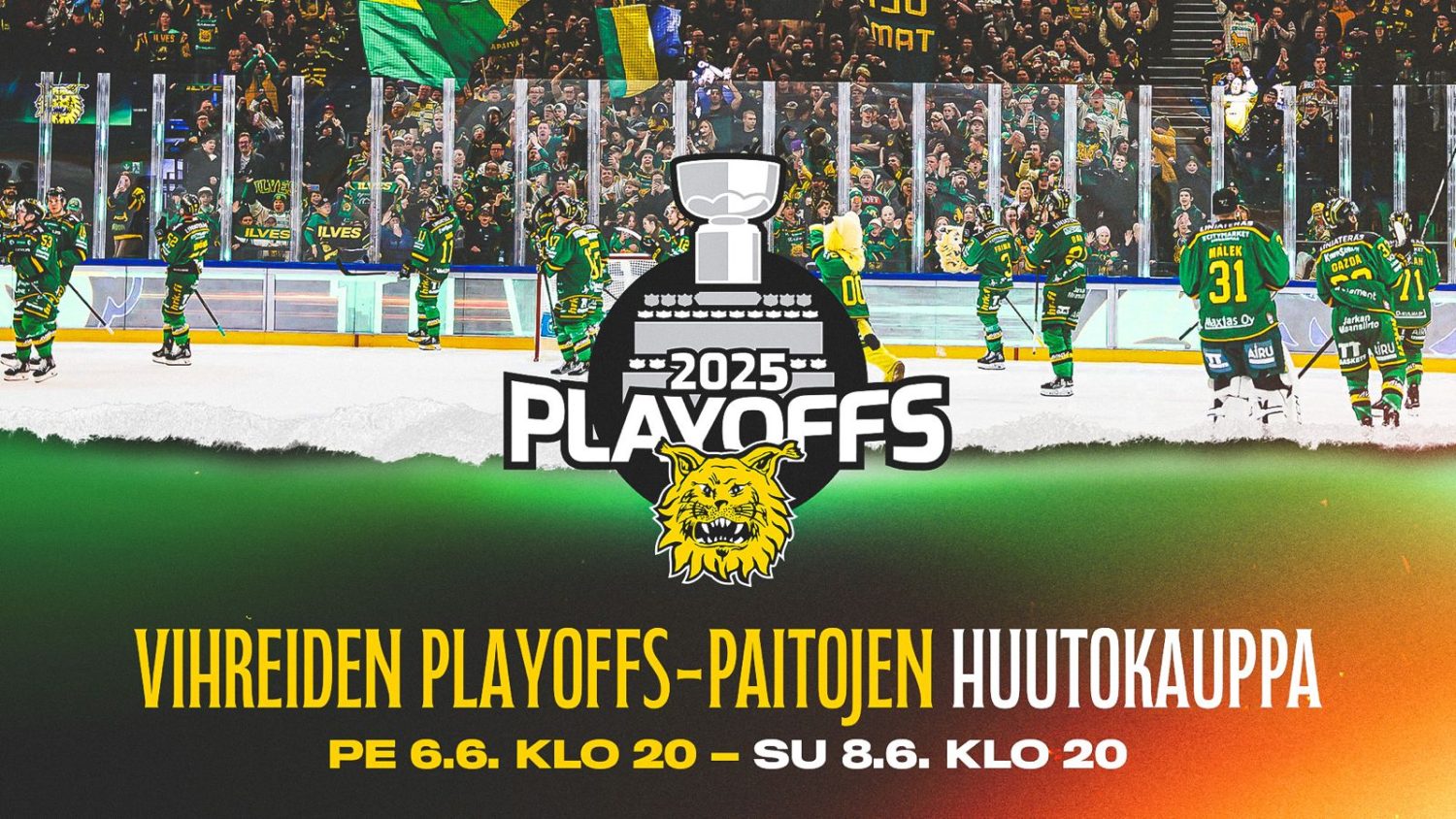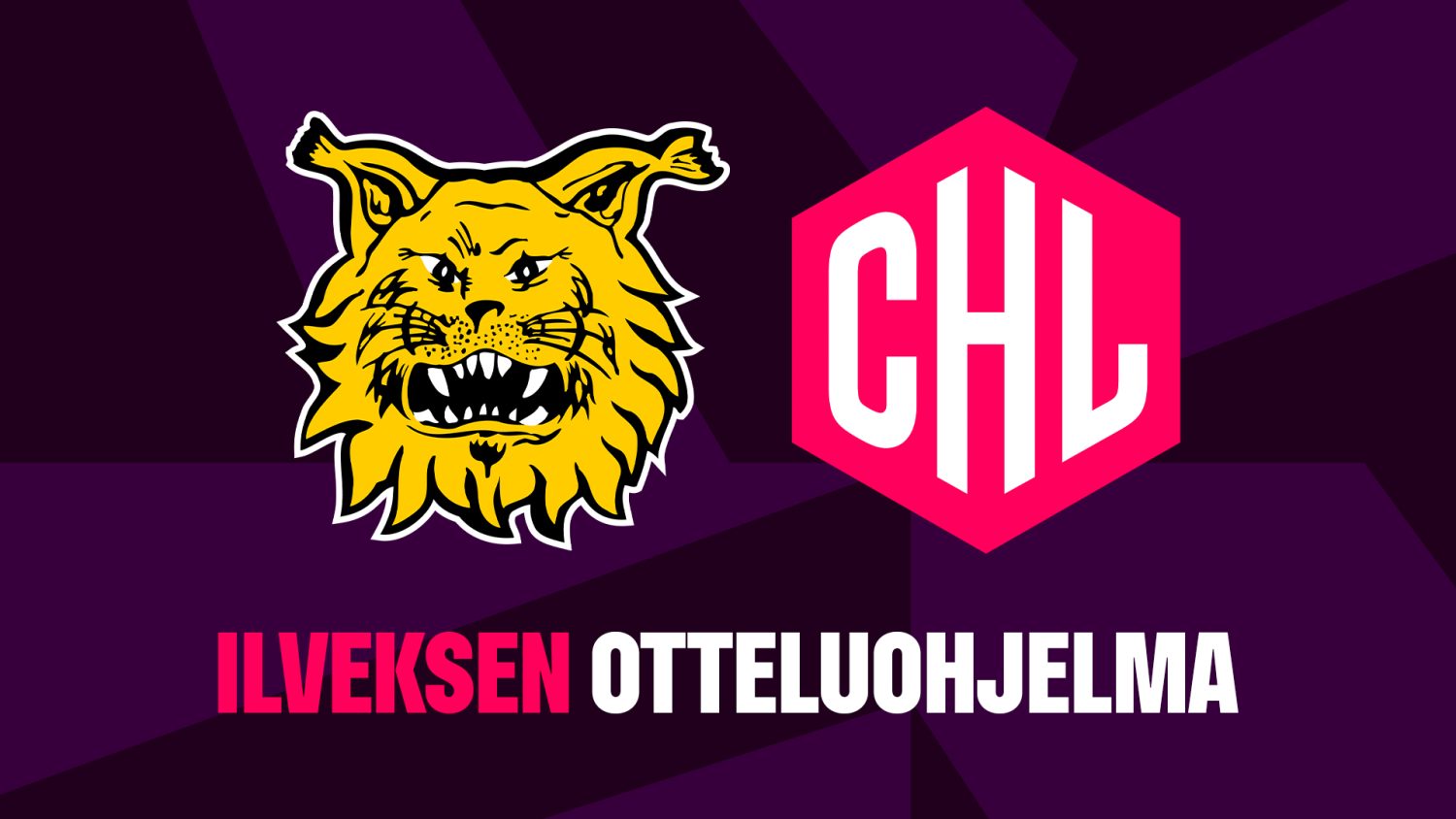Jyrki Seppä turns 60 years old on Sunday, November 14th. From Kaukajärvi, Tampere, to Ilves as a boy, Seppä then reached even the NHL in his playing career. In the present day, Seppä works for Ilves as the Chairman of Ilves-Hockey Oy’s board of directors. In this interview, Seppä reminisces about his playing career and sheds a light on the current situation of Ilves’ Liiga team as well as future plans.
The penguin of San Francisco
Jyrki Seppä was born in Tampere on November 14th, 1961. The first years of his life he spent living in the Kaleva district, but in 1966 the sporty Seppä family moved to the then brand new Kaukajärvi suburb. Physical exercise and sports have always been a part of Seppä’s life ever since he was a little boy.
– My family did a lot of sports, specifically individual sports. My father was a police officer in Tampere, and he skied with the police’s sports team, and my brothers skied, as well. I, too, skied competitively, and at least in the fourth grade I won an interscholastic ski competition.
Little by little the ski tracks made way for the ice rink.
– There was a rink right in front of our house in Kaukajärvi. I went skating there, and when the junior teams’ practices began in the fall, I was there watching and hanging around the boards. My father then asked if I wanted to join in and play and that’s how it all began with the F-junior team. I still remember the first game – we played against Pyynikki’s F-juniors and beat them 5–1. I scored all five goals, so it wasn’t that bad of a start, says Seppä smiling at the memories of his career’s beginnings.
At the time, Ilves’ district activities were at their peak. Seppä started with the district’s team and got to play with the representative team the next year. He played several games with both teams.
– At the time we played both with the first team as well as the district teams. The name of our district’s team was San Francisco Penguins. Then the teams’ names came from North America and the NHL, but that I don’t know where our team’s name came from because there wasn’t a club like that. But there amongst the D-junior teams named after Montréal and Toronto was our Kaukajärvi San Francisco Penguins, laughs Seppä.
– Back then two age groups always played together, and we mostly played for the representative team. Kari Heikkilä, with whom I started playing in the SM-sarja (predecessor of the current Liiga), played with me in the representative team at the same time, and there were several other players who we played with later on.
In the end, hockey engrossed all of Seppä’s attention, but he exercised and played various sports until his teens.
– I played a lot of sports when I was young. There was a canoeing boom in Kaukajärvi then. Mika Savilahti’s dad and Eero Savilahti’s grandpa lived in the same building and set up the junior team for the Pirkka-Melojat canoe club, and I was a part of it for years. In addition, I played basketball in Pyrintö, put the shot, and even skied sometimes still. I was probably 13 or 14 when I left the other sports, and hockey became the number one.
One of the top players in his age class
In the 1970s, the world was quite different compared to the present. Playing hockey professionally was rare, and Jyrki Seppä did not yet dream of it, but his goal of playing with the representative team became clear rather early on.
– In Ilves, we won the Finnish championship in every age class except the C-juniors. I was one of the top defensemen in every one of those teams, and then I realized that this could become something. I did not think about playing professionally at that time, but I had dreams of getting into the representative team and boys’ national team.
When he was 17, the dream became reality. In the first season, the role was still a small one, but in the second season Seppä already had a huge role and responsibility in Ilves’ defense.
– That was the year when Ilves and Koovee merged. There was a lot of players and the competition for roster spots was fierce. I got to play regularly during the first season, but in no way top minutes. In the fall, I started out with playing in the A-juniors, but I got to play with the representative team in the course of the season.
– The next year, the coach Raimo Määttänen put “Kake” Heikkilä and I together as a defense pairing, and we instantly played wonderfully together. I have a lot of great memories from those times.
Seppä was also invited to the national team and played in one World Junior Championship tournament, from where he brought home a silver medal. A certain Risto Jalo played in the same team.
– The previous year I was cut from the team among the last ones, but the next year I got in. The tournament was held in Germany, and we got silver. It was a great experience, reminisces Seppä.
Because of his current role, Jyrki Seppä is well aware of the situation of today’s young hockey players. Sports Director Timo Koskela leads the team responsible for Ilves’ sports side of things, and Seppä and Ilves-Hockey Oy’s CEO Risto Jalo are a part of it.
– The times are surely different nowadays. 15-year-olds can, according to rules, use the services of an outside agent, and it is sometimes difficult. I sort of hope that we could let the boys play and go to school when they are that young and not involve money yet. It is a great challenge at that age to keep your head straight, and the families too. The talent will shine through anyway, and everyone gets what they deserve at some point, ponders Seppä.
To North America among the first
Seppä moved to Helsinki after two seasons with Ilves.
– After graduation I applied for studies in law at University of Helsinki. I was accepted the next year, and that way I ended up playing with Jokerit Helsinki. The nature of the studies, at least at that time, was such that playing in Tampere and studying in Helsinki wouldn’t have worked.
Winnipeg Jets of the NHL drafted the defenseman as the 43rd player in 1981. Being drafted was rare at the time, and Seppä was, after Markus Mattson and Jari Viitala, the third Ilves player who was picked. Risto Jalo from Ilves was also drafted the same year.
– The routines were totally different. I do remember a few NHL scouts talking to me and interviewing me back in the World Championships in Germany, but they were just talks I did not pay attention to. I then read in the newspaper that I was drafted. There was not huge hype around the draft then, laughs Seppä.
Even though he had a university place in his home country, Seppä decided to jump into the unknown after one season with the Jokerit.
– Because I had this professional attitude towards hockey, I absolutely wanted to go and try after getting picked. I thought that I could always finish my studies later. I also served in the military as an old man, so to speak, when I returned to Finland.
Still only 40 years ago the NHL was the Canadians’ league. There were European players, but the attitudes towards them varied a great deal.
– It probably depended greatly on the team and organization. Tom Watt, Winnipeg’s head coach of that time, was from the university world, and Europeans fit well in his way of thinking. However, his superior was a tough former player of the Montréal Canadiens, John Ferguson, who subscribed to the Canadian playstyle.
Seppä spent his first year in Canada with the Sherbrooke Jets of the AHL.
– Sherbrooke was a new team in the AHL and Quebec. During the first year there, we had a head coach who was French Canadian through and through and did not understand Europeans at all – probably did not even admit that Europeans could play hockey. An unfortunate turn of events made him leave as he was diagnosed with cancer in the middle of the season, recalls Seppä of his first year.
When Ron Racette had to leave his position due to the illness, he was succeeded by Rick Bowness who currently coaches the NHL’s Dallas Stars and former Ilves player Roope Hintz, among others.
– Bowness was in his last playing years and didn’t receive much playing time in Winnipeg. He then came to Sherbrooke to play and coach and continued there the next season. Bowness understood the European player and the European playstyle well.
– But it was still clear-cut. If there were two evenly skilled players and one of them was European and one Canadian, the Canadian was the one who played. So, the European had to be clearly better in the position to get minutes.
Although there were few Europeans, Seppä adjusted well to the life in North America.
– I adjusted really well. Probably it helped that I had been good at school and at least to my mind I spoke good English, and I was brave enough to speak it. That matters a lot. If you don’t talk, you’ll be left outside no matter how great of a player you are. You don’t need to run your mouth all the time, but you need to keep up with the discussions.
Seppä played in total of 13 NHL games. He could have possibly played more, but Seppä doesn’t want to speculate what could have happened.
– I went to my first training camp right after the draft, and it went well. They asked me what they’d have to do to keep me there. I had already decided that I will return to Finland for a year to study and play before I leave for North America. In retrospect, that was probably a mistake, and I could have gotten a one-way deal right there and then. The second year’s camp went well, too, but I sensed that they had had a change of heart and I guess they wanted to educate a young player. The experience was still great, even though I could have achieved more playing-wise. But it’s a what if that is needless to speculate upon.
The NHL games have permanently etched into Seppä’s mind. Winnipeg is a serious hockey city that breathes hockey. Seppä encountered several absolute hockey legends on the ice.
– It was a tough league, and a great memory has remained. The game was fast and hard. I encountered star players. At the time New York Islanders ruled the league, and they had Bryan Trottier who I still remember. It was my second or third game, and I still remember how intensely he battled. Edmonton Oilers was on the route to become a dynasty, and it was of course great to watch Wayne Gretzky and Jari Kurri play together, even if I was on the receiving end of that. And something like playing in the legendary Madison Square Garden has stayed with me just for how special it was, reminisces Seppä about his time in the legendary league four decades ago.
The return to the old team and creating new success
After two years in North America, Seppä returned to Finland and Jokerit. That ended up being the last year he played.
– I tore a knee ligament. At the same time, there was irregularity with contracts, and verbal contracts weren’t adhered to. That, alongside the injury, affected my enthusiasm and motivation, and therefore I made the decision to retire. You could speculate if I would’ve had more to achieve during my playing career, but ultimately, it’s unnecessary.
After he was done playing, Seppä moved to Southern Savo with his family. Instead of hockey, he started a career in the business world. However, hockey has been present in his life one way or another.
– We moved to Kerimäki near Savonlinna city. I worked in a bank then and was a part of SaPKo’s (Savonlinna’s hockey club) organization as a shareholder. The boys started playing hockey, so through them I was involved with SaPKo’s junior teams. At one point they needed a coach for the class of 1987, so I promised to join for a few years. We had a great team and we competed with the Jukurit for the title of the best team in the region, says Seppä, who coached Tuukka Rask among others during those years.
Even though Seppä wasn’t a part of Ilves’ daily operations until the year 2017, he was still well aware of what was happening in his old team.
– “Ekku” Lagerstam once convinced me to buy a tiny number of Ilves’ shares. I had constantly been following what was happening in Ilves, and I was pretty knowledgeable about it, even though I didn’t have a position in charge. The Ilves people longed for organizational changes, and they finally got them as changes were made five years ago. Seppä remembers the start of those changes warmly. Seppä and Risto Jalo were realizing the changes from the beginning.
– At the turn of the year in 2016–2017, I talked with “Ripa” about what is happening, about how Vincent Manngard has realized how challenging the situation has become and would be willing to sell Ilves this time, if he found good successors. Ripa and I looked at the numbers, and he was also searching for new people for the project. For me, it was a prerequisite that we’d gather a good group with several people who could continue the project.
– We were able to gather that group and got a good head start as Ilves played long playoffs against Tappara. We could have even hit the jackpot in the playoffs, but on the other hand, I appreciate how success will come with patient work from the whole organization. And that’s why we are here now, so that our team will succeed and that fans can enjoy it, emphasizes Seppä, who has been Ilves-Hockey Oy’s Chairman since 2017.
Ilves’ operations have been showing an upward trend since then. This is evident from both the economy and the hockey team. The next huge step is ready to be taken as the Tampere teams move into the modern Tampere Deck Arena in December.
– The change of arenas comes at a convenient time. We have reached a great stage with the old operations and models. However, our goal is still to grow as a company in the future and improve our activities on every sector. I believe that the new arena is the perfect boost for that. The stability of the economy is the basis of everything, and it is built steadily and with care.
– We’ve had great years, pretty much every year we’ve been here, but our capital is still very small. We can’t do big leaps forward, but we have to take small steps at a time. I would be great that we could amass more capital, so we could have a little more to lean on. That’s what we are after. From the beginning, we’ve only worked on the budget for the regular season, and that’s what we are still doing. And now because of Covid, the playoff revenue was next to nothing, and we haven’t had significant results, Seppä says, reminding about patience.
Simultaneously with the economy, the hockey side of things has also improved.
– I think that we have a tad better team every year. Every year we’ve had great individual players, but if we look at this year’s team, we have productive players on every line as long as everyone is healthy. Sure, everything does not depend on the depth of the team, because coaching has a huge role, too.
Ilves was in the first place in the league heading to the national teams’ playing break. That makes the board’s Chairman smile, of course.
– And when we think about the fact that the way we’ve played has been the best we could be only at times. And still we are where we are supposed to be with this level of play. Surely, we have to remember that the league is very even, but it still feels good, there’s no denying that.
“I’ve always been an Ilves”
Although everyone knows that Tampere’s new arena is needed and will enable the organization’s development, leaving Hakametsä arena behind will be emotional for every member of the Ilves family. Same applies for Jyrki Seppä.
– I do remember how as a little kid we’d take bus number 24 to Vuohenoja and from there we’d run to Hakametsä. The capacity was 10,200, and the ends had standing sections. We hung around the end board and banged on it during the games. I can’t deny that there have been great and unforgettable memories.
However, it does not do good to dwell in the nostalgia, because there’s an organization to improve further.
– When I look at the arena situation from the current position I’m in, the new arena definitely brings a lot of new opportunities for us and Tampere hockey. The world progresses, and if you want to strive for something, you need to keep up with the progress. I tip my hat to the city of Tampere, who took on the project as the main owner, says Seppä gratefully.
Seppä has traveled and lived all over the world, but Ilves has always been very important to him.
– It has had a great significance to me all my life. There have been long periods of time that I have had no contact with the club, but I’ve always thought myself an Ilves. It has remained at the back of my head all this time.
Seppä also likes the state of the whole Ilves family.
– We do this for the fans. Looking at the attendance records after Covid, I can’t help but tip my hat to the fans. It’s great. What we have here is a culture that a lot of regions do not have. We have witnessed it this season in the 90-year anniversary ceremonies, and it will probably culminate in the final game in Hakametsä, says Seppä who will celebrate his 60th birthday by going skiing.
